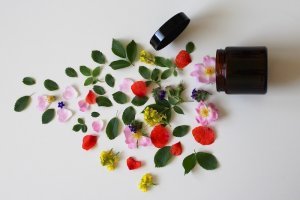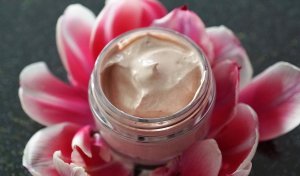A custom fragrance in its own way is like a fingerprint or a snowflake in the sense that it is unique to itself and unlike any other in the world.
While Mother Nature and genetics create the former two, a custom fragrance is deliberately designed for either one individual, one particular brand or as an important ingredient used in personal care products in which case it becomes incorporated in the custom fragrance of that particular brand.
Developing a custom fragrance can be compared to creating a work of art. It involves a detailed process that incorporates consumer appeal and ultimately brand identification and loyalty. Fragrances can be bold and flirty or quiet and subtle and they can evoke any and every mood under the sun.
When used in personal care products, in order to be successful, fragrance creators, such as the experts at Alpha Aromatics, must ask themselves the following six important questions.
1) Will Men Or Women Be Using The Product?
It is a well-known and highly marketable fact that women are more emotionally connected to fragrance than men and when it comes to personal care products, it is scent that will determine whether or not a purchase is made.
It’s not that the quality or ingredients in the lotion, soap, shampoo, moisturizer or deodorant aren’t important, it’s just that the pleasing smell test wins out every time. This is the reason both big and small manufacturers spend so much of their time perfecting the scents they use in their personal care products.
There are also the psychological aspects of marketing to women. According to Sue Phillips adjunct professor at LIM College in New York: “The whole idea of marketing to women is they can be anything they want to be. It used to be that women wanted to wear something appealing to men. Now the trend of customization is, ‘I want to reflect who I am.’
Our master perfumers understand that developing a unique and popular scent for either a cosmetic or personal care product requires thought and flexibility, as all mixed fragrances must coalesce to become a pleasing, feminine olfactory experience.
Floral scents, such as gardenia, jasmine and rose; fruity, which include: zests of lemons, oranges, and bergamot; fantasy, fresh and clean are among the most popular female scents. These aroma categories work best when used in conjunction with specific products.

Floral scents derived by the deft blending of essential oils are very effective when used in soaps and bath products. The aromas emitted by the oils are both aromatic and therapeutic. Deodorants often contain fantasy scents as well as botanicals and herbs featuring elements such as green tea, fresh lemongrass and strong earthy aromas. Essential oils are also prevalent in many shampoos, the most popular of which are lavender, carrot seed and rosemary.
Essential rose oil or rose water are popular additives in facial creams and lotions because they truly capture the flower’s intoxicating and delicate scent. In the case of lipsticks, visual allure is just as important as fragrance. There are a myriad of choices for color and scent, but today the trend is more towards darker colors and both floral and fruity aromas. Among the most popular are: cumin, musk, vanilla, orange flower, neroli and narcissus.
Men’s use of fragrance-instilled personal care products is decidedly different. According to a study completed by the Environmental Working Group (EWG), men, generally speaking, are exposed to fewer ingredients on a daily basis. On an average, the study concluded that while women utilize 12 products containing 168 unique ingredients every day, men indicated that they use 6 products daily featuring 85 unique ingredients.
Before the early twentieth century, men’s scents were confined to typical barbershop aftershaves, such as Bay Rum and Florida Water. World War II changed men’s attitudes about personal care and grooming products. A regimented military life instilled the importance of a daily grooming regimen and soldiers returned from the war accustomed to using products that kept them clean-shaven, fresh-smelling, and neatly tended.
By the early 1950s, now-famous male fragrances such as Aqua-Velva, Old Spice, and Canoe had become popular. Today, Men’s personal care products are usually tinged with spicy, woody and leather tones.
2) What Age Group Are You Targeting?
In the world of product marketing, all aspects that influence the sale of all products must be calculated, and this includes the age group expected to buy the personal care product. If no target market is established, there is no direction, no place to go. Part of understanding how marketing really works involves understanding the difference between a demographic and a target market. These terms are closely related, but they are not the same.
Target Market vs. Demographic
Target markets are much broader in scope than demographics because for many businesses, their products or services appeal to a wide range of individuals. They are actually collections of demographics that may be interested in a particular product or service. Marketers are forced to focus on the bigger picture when developing models and strategies because uncontrollable factors such as product shelf life and buying cycles can greatly influence the stability of target markets.
On the other hand, demographics are considered divisions of a target market that share particular attributes. For example, one age demographic (18-35) is usually the focus of many television advertisers. Other age groups do not necessarily fall out of this target market but they are considered a different demographic. Blanketing all consumers with one marketing message will fall flat on an untargeted audience, as the product or service will never apply to all or even most consumers.

In the case of personal care products, the lines between demographics are clearly drawn and marketers address these factors every day. Younger female consumers (18-25) on average prefer sweeter smells. They are also more fickle than consumers in other sectors and are likely to experiment and make frequent changes in their preferences. Older demographic groups, however, prefer classic fragrances and brands.
According to a study conducted by the UN World Population Ageing 1950-2050, by 2050, the global population aged 60 and over is expected to reach 2 billion and will represent one in every 3 persons living in the developed regions, climbing to 37% in Europe. These figures are important because they indicate the burgeoning importance of the senior population and highlight the potential of this yet largely untapped consumer demographic.
Whether working, retired or in need of outside care, many within this generation have the time, inclination and money to spare to look their best regardless of calendar years. Over the course of the last four years, this has opened up a door for products that promise anti-ageing properties in beauty and personal care products. In fact, according to Mintel’s Global New Product Database, one in 10 beauty and personal care products launched in the first half of 2014 claimed to have anti-ageing benefits.
3) What is The Climate Where The Product Will Be Used?

Climate is an important consideration because it often determines the concentration of a particular scent that is used in a personal care product. Users of skin care and other personal care products in the warmer Southern regions tend to favor light, fresh and clean scents, while consumers in northern climates seem to prefer heavier, more lingering scents. Sometimes a favorite skin care product does not work well when a climate change occurs and sometimes it may work even better.
4) What Type Of Product Are You Creating?
When we develop a fragrance for personal care products, we always test it to ensure that it does not overwhelm its designated use. While fragrance is important in all personal care markets, it sometimes plays a secondary role behind overall function. Perfume masters well understand that fragrance is far more than a pleasant method to mask unpleasant odors from active chemicals. An overall sensory experience for a specific fragrance is achieved by careful marketing of the particular product. Statistics reveal that about one-fourth of the total amount of fragrance that is produced is used for personal care applications. From 2008-2013, sales increased at a compound annual growth rate (CAGR) of over 3%, dropping to a forecast of more than 2% over 2013-2018.
5) What Is The Purchase Price Of The Product?
All businesses depend on profit to survive. Establishing a purchase price for personal care products is a complex procedure that is unique to that industry and cannot be compared to other pricing structures. It is also relative in the sense that in wealthier countries prices are often elevated and justified by a higher quality of ingredients, which ultimately leads to a higher profit margin. The key factors to consider when setting prices for personal care products are: understanding the product costs and the targeted market. If the price is too low, consumers are likely to question label claims and will not value the product. Too high a purchase price won’t move inventory.
Whether you are a master perfume house or a small company, when setting product prices, you must have a thorough understanding of how your competitors are pricing products of the same ilk and the placement of distribution channels. For example, will the product be sold in family friendly salons or high-end boutiques? There is a price point profile for each of these outlets and pricing should be consistent within that framework.
The understanding of terms is also important for the establishment of a product purchase price. Cost refers to the total expense of raw materials plus packaging and overhead. This includes: labor, shipping landed cost (incoming shipping fees) plus your own time if your personal care products are your own. Cost information should never be shared either with competitors or consumers.
The suggested retail price (SRP) refers to the end cost paid by the consumer. As a rule of thumb, an appropriate retail price for a natural skin or body care product in the US market should be five to six times the cost, leaving the provider with an 80% or more profit margin. A business owner must never be tempted to offer lower prices below three times the cost and should focus always on finding new ways to reduce production expenses. One solution might be if a better price on raw materials is required, consider splitting costs with another company that needs those same materials. Both enterprises can profit from this cost effective measure.

Wholesale pricing is a horse of still another color and comes into play when products are sold through a distribution channel. The wholesaler will usually charge a price that is somewhat higher than he or she paid to the producer. Any retailer who purchases goods from a wholesaler will increase the price again when they sell to a particular store. The most important question to ask is: “What is the dollar return I make on each sale?” The standard is 50% of retail pricing. If your retail price is $20, you would sell the product for $10 wholesale.
Let’s take the above-mentioned example in wholesale pricing. You sold an item for $20. This means that it cost you $4. (Remember retail pricing should be a “times five” pricing choice). Your dollar return was $16. Your profit dollar and profit margin are the measurements of financial success in your business. To look at it in profit margin terms and not profit dollar terms, take your profit made in dollars and divide by the sales price. Then multiply by 100 to get a %.
6) How Important Are Client Relations?
Communication is vitally important for product satisfaction both on behalf of both the provider and the client. Our team understand and focus on this important sales aspect when dealing with all their customers who are scattered across the world. They take the time to help them discover which characteristics they truly seek in a custom fragrance. In many instances, this can be an elusive concept because what they are looking for and what they are asking for are often not the same thing.
Whether a big corporation or a small company, all of our clients are the same and they are always treated with dignity and respect. We take the time to understand a company’s customer base and educate potential clients as to the importance of sometimes foregoing personal preferences and opting for that special concoction that will be most attractive to the majority of their customers. This takes skillful communication and our teams have had a lot of time to practice, having been in continuous operation for more than seventy years.
So send us a message and get the answers to all the questions surrounding a successful selection of the perfect scent for any personal care product.
Final thoughts about fragrance: The beauty of fragrance is that it speaks to your heart and hopefully someone else’s. ~ Elizabeth Taylor
This blog was created with the insight and direction of our chief perfumer, Roger Howell, our President and CEO, Arnold Zlotnik, and our key Alpha Aromatics management and staff. Explore our company’s mission, about our credentialed and degreed perfumers as well as the passion behind our every fragrance creation.
 alpha aromatics®
alpha aromatics®